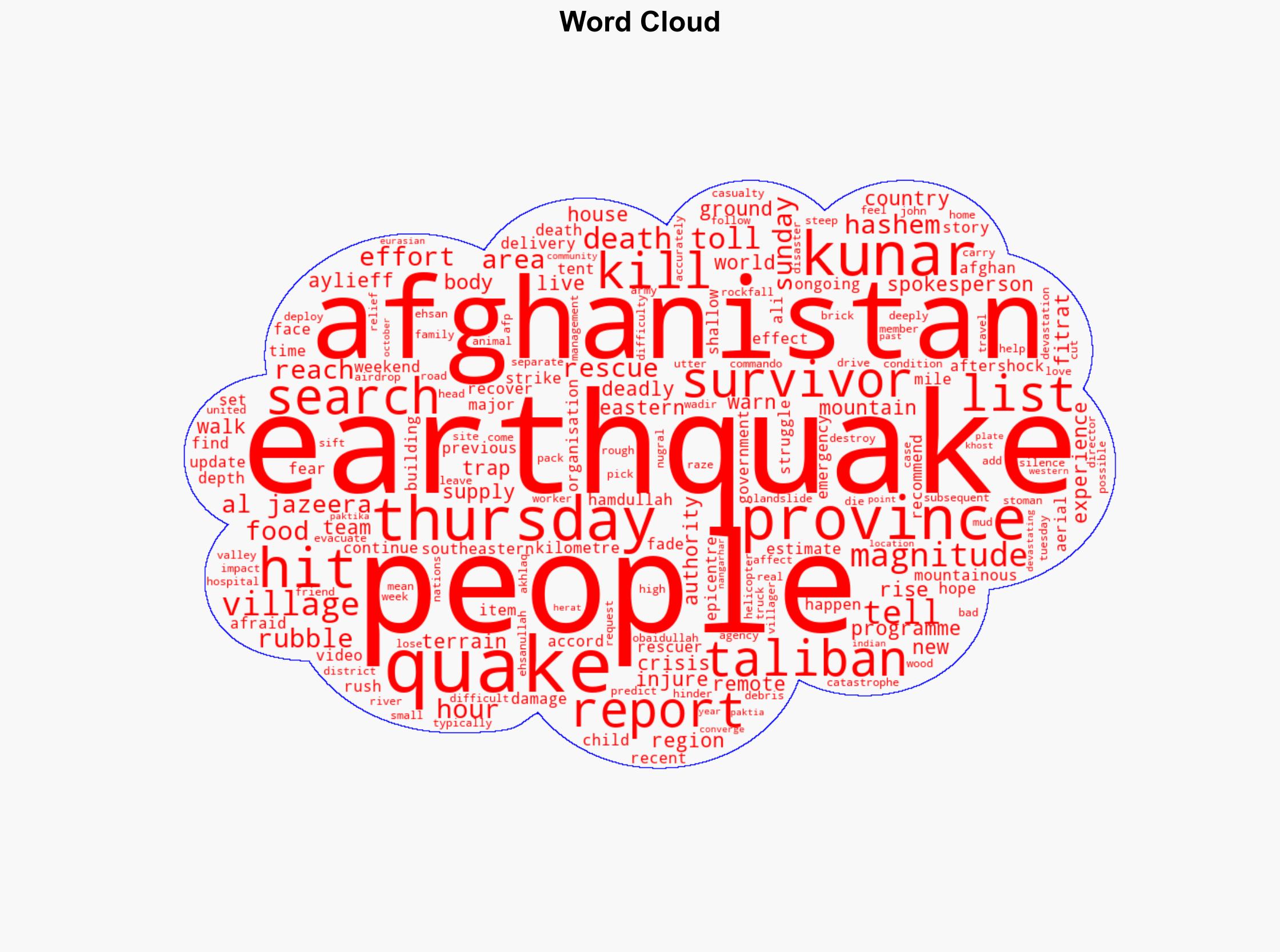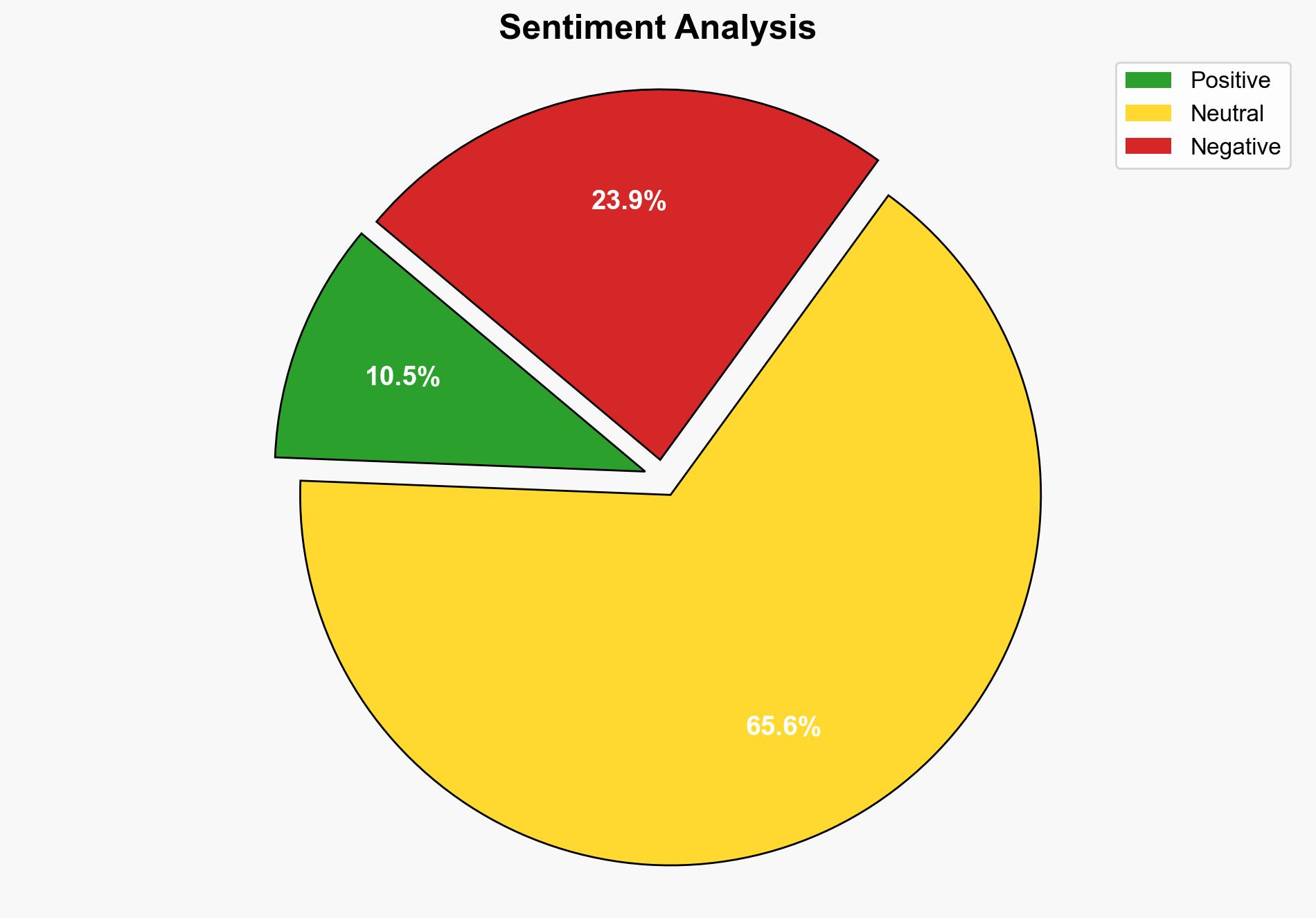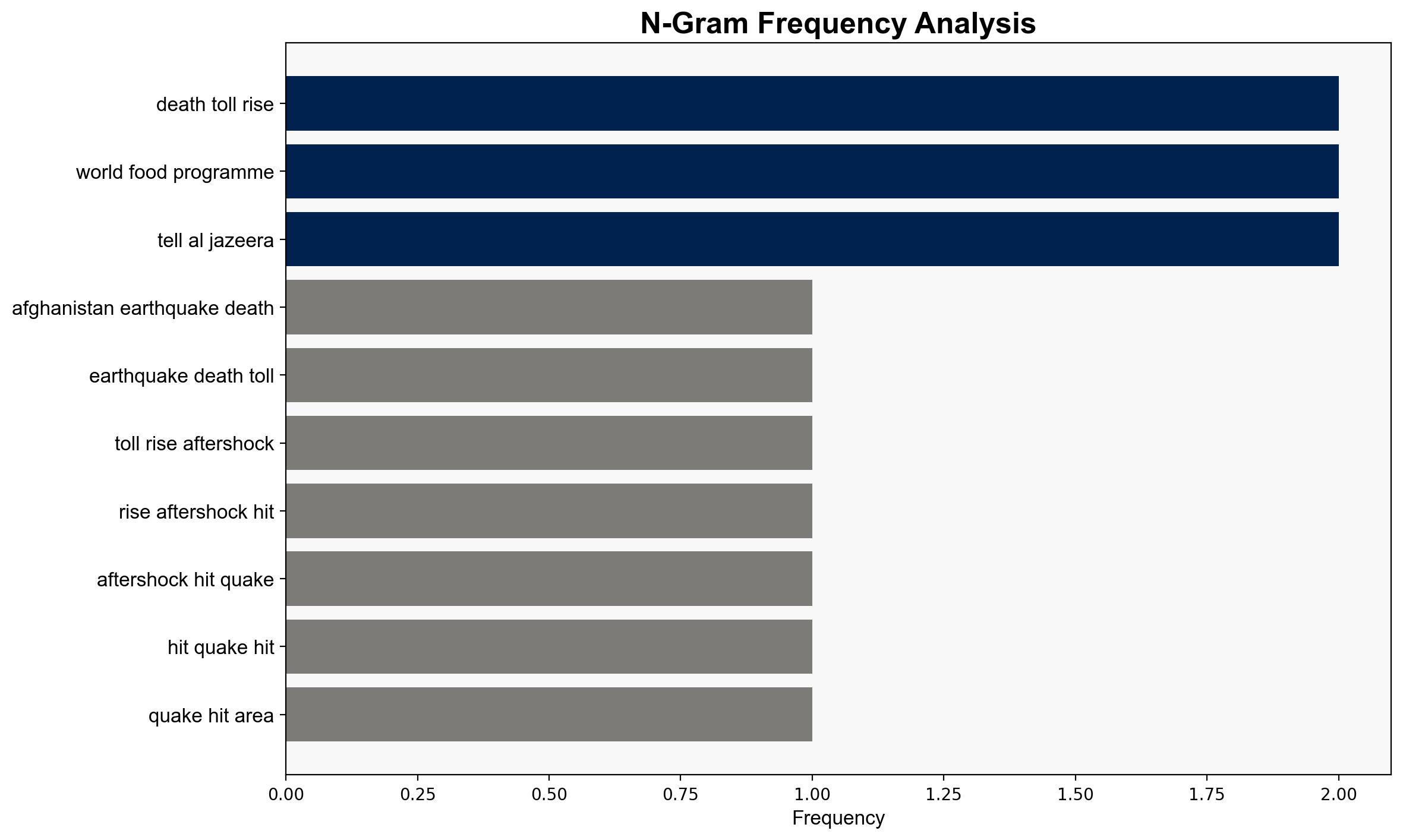Afghanistan earthquake death toll rises to 2200 – Al Jazeera English
Published on: 2025-09-04
Intelligence Report: Afghanistan earthquake death toll rises to 2200 – Al Jazeera English
1. BLUF (Bottom Line Up Front)
The death toll from the recent earthquake in Afghanistan has risen to 2,200, with significant challenges in rescue and relief efforts due to the region’s difficult terrain and ongoing aftershocks. The most supported hypothesis is that logistical and environmental challenges are the primary factors impeding effective disaster response. Confidence level: Moderate. Recommended action: Enhance international coordination for immediate relief and long-term infrastructure rebuilding.
2. Competing Hypotheses
1. **Hypothesis A**: The high death toll and slow rescue efforts are primarily due to logistical challenges and difficult terrain, compounded by the frequency of aftershocks.
2. **Hypothesis B**: The response is hindered by inadequate coordination and resource allocation by the Taliban government, exacerbating the impact of natural challenges.
Using ACH 2.0, Hypothesis A is better supported due to consistent reports of terrain difficulties and logistical issues, such as landslides and limited access to remote areas. Hypothesis B is less supported but plausible, given the Taliban’s limited experience in managing large-scale disasters.
3. Key Assumptions and Red Flags
– **Assumptions**: It is assumed that the Taliban’s governance capabilities are limited, affecting disaster response. The assumption that logistical issues are the sole barrier may overlook potential governance inefficiencies.
– **Red Flags**: The absence of detailed information on international aid efforts and their integration with local authorities raises concerns about coordination.
– **Blind Spots**: Potential underreporting of casualties and damage due to remote locations and communication breakdowns.
4. Implications and Strategic Risks
The ongoing crisis could lead to increased humanitarian needs and potential destabilization in affected regions. The lack of effective disaster response may erode public trust in the Taliban, potentially leading to civil unrest. There is also a risk of regional instability if the situation exacerbates existing socio-economic challenges.
5. Recommendations and Outlook
- Immediate international assistance should be mobilized to provide logistical support and resources for rescue operations.
- Long-term strategies should focus on infrastructure development and disaster preparedness training for local authorities.
- Scenario Projections:
- **Best Case**: Effective international aid and improved coordination lead to a stabilized situation with minimal further casualties.
- **Worst Case**: Continued aftershocks and inadequate response result in a humanitarian crisis, increasing regional instability.
- **Most Likely**: Gradual improvement in rescue efforts with international support, but long-term recovery remains challenging.
6. Key Individuals and Entities
– Hamdullah Fitrat
– John Aylieff
– Ehsanullah Ehsan
– Obaidullah Stoman
7. Thematic Tags
national security threats, disaster response, humanitarian aid, regional stability





